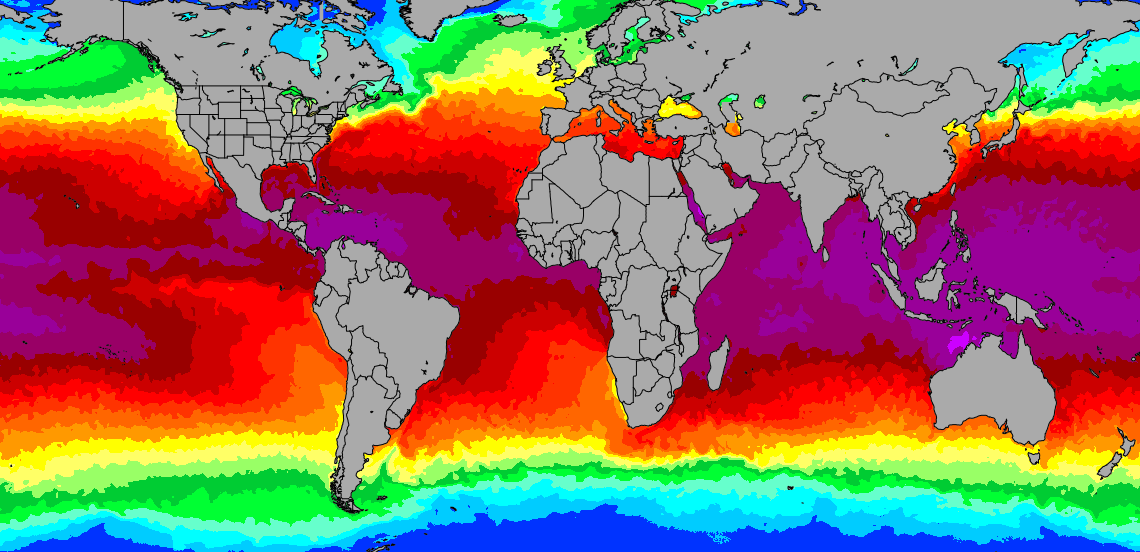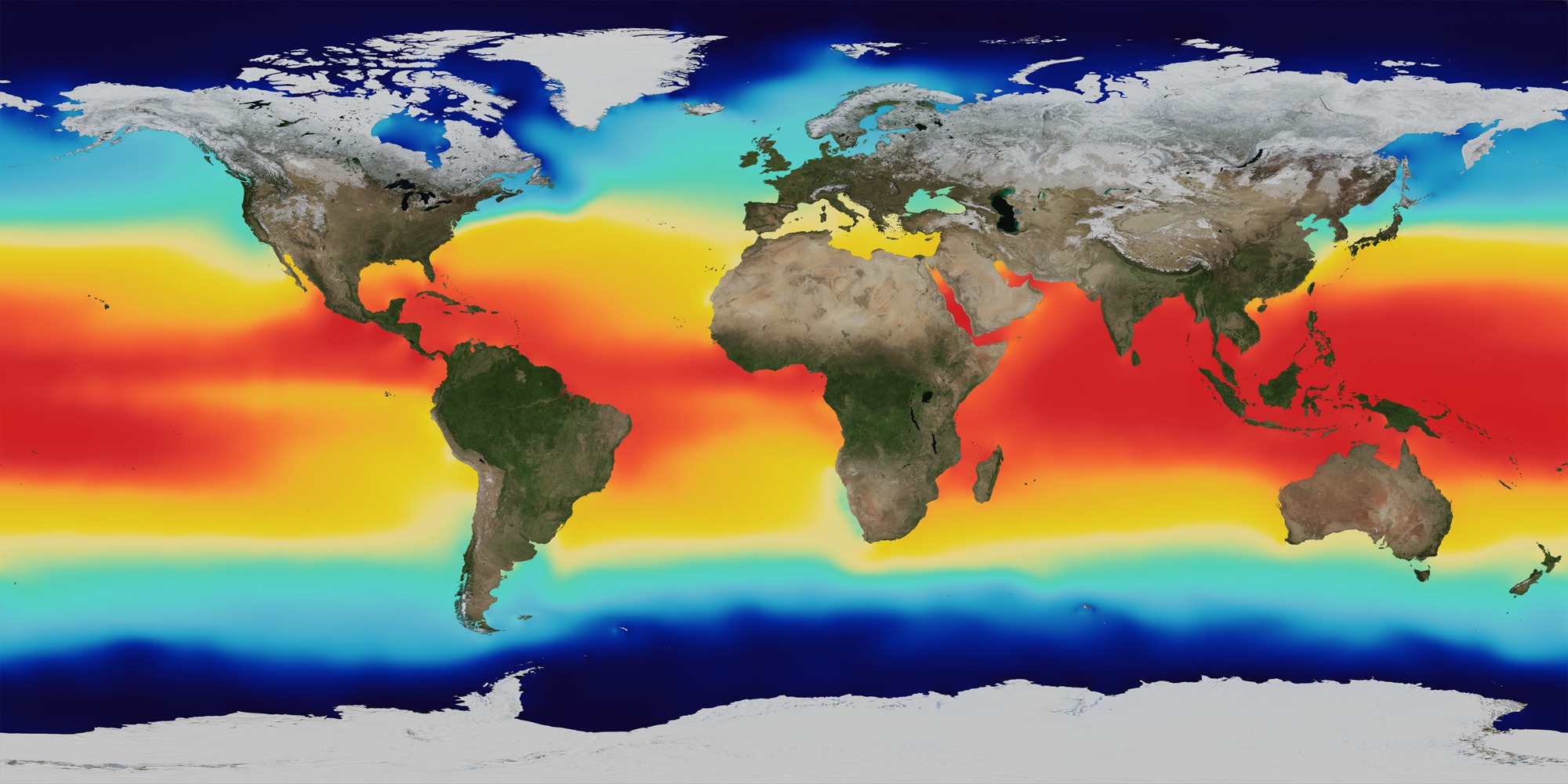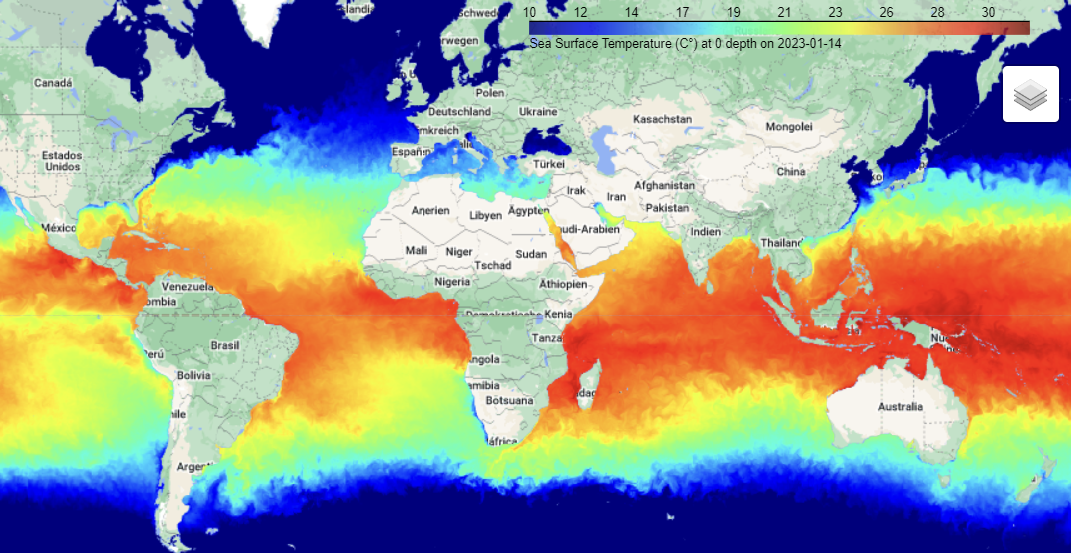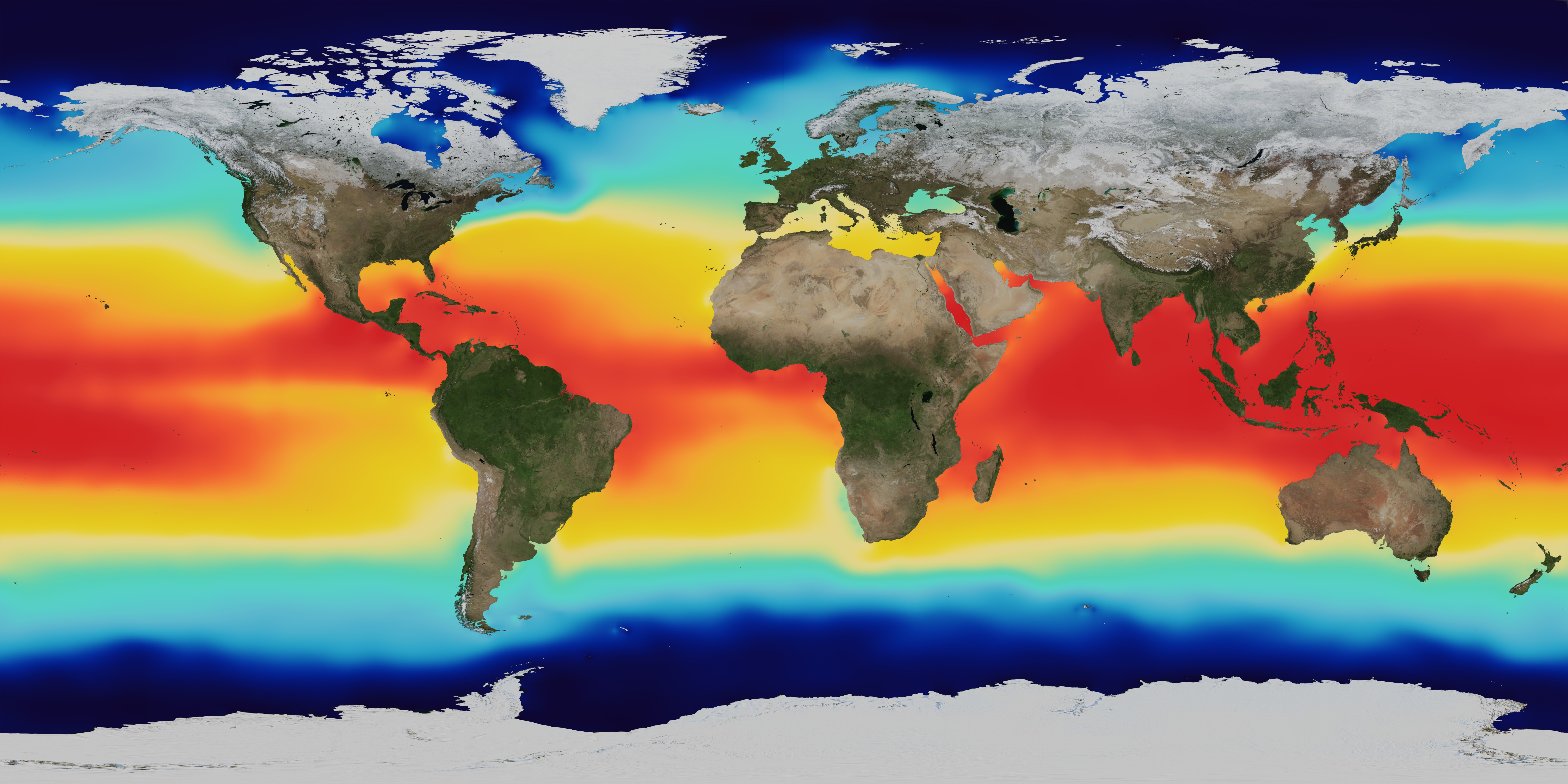Global Ocean Temperature Map – Why is it hot at the Equator and cold at the poles? The diagram below helps to explain why the poles are colder than the Equator. Figure caption, The sun’s rays hit the Equator more directly and . The ocean’s ability to absorb excess heat has shielded humans from even more rapid changes in climate. Without this oceanic buffer, global temperatures would have risen much more than they have done .
Global Ocean Temperature Map
Source : www.seatemperature.org
NASA SVS | Sea Surface Temperature, Salinity and Density
Source : svs.gsfc.nasa.gov
Monitoring Sea Surface Temperature at the global level with GEE
Source : towardsdatascience.com
NASA SVS | Sea Surface Temperature, Salinity and Density
Source : svs.gsfc.nasa.gov
GISS ICP: General Charateristics of the World’s Oceans
Source : icp.giss.nasa.gov
Global ocean map overlaid with annual mean temperature (°C
Source : www.researchgate.net
Ocean temperature maps show where waters are extraordinarily hot
Source : www.washingtonpost.com
Map the effects of climate change on the ocean | Documentation
Source : learn.arcgis.com
Copernicus: February 2024 was globally the warmest on record
Source : climate.copernicus.eu
Ocean Temperature
Source : app01.saeon.ac.za
Global Ocean Temperature Map World Water Temperature &: Global average temperature maps are available for annual and seasonal temperature. Long-term averages have been calculated over the standard 30-year period 1961-1990. A 30-year period is used as it . With ocean levels rising, there are 36 global cities that experts predict would be the first to go under, with 10 major US cities including New York City and San Francisco making the list and .










